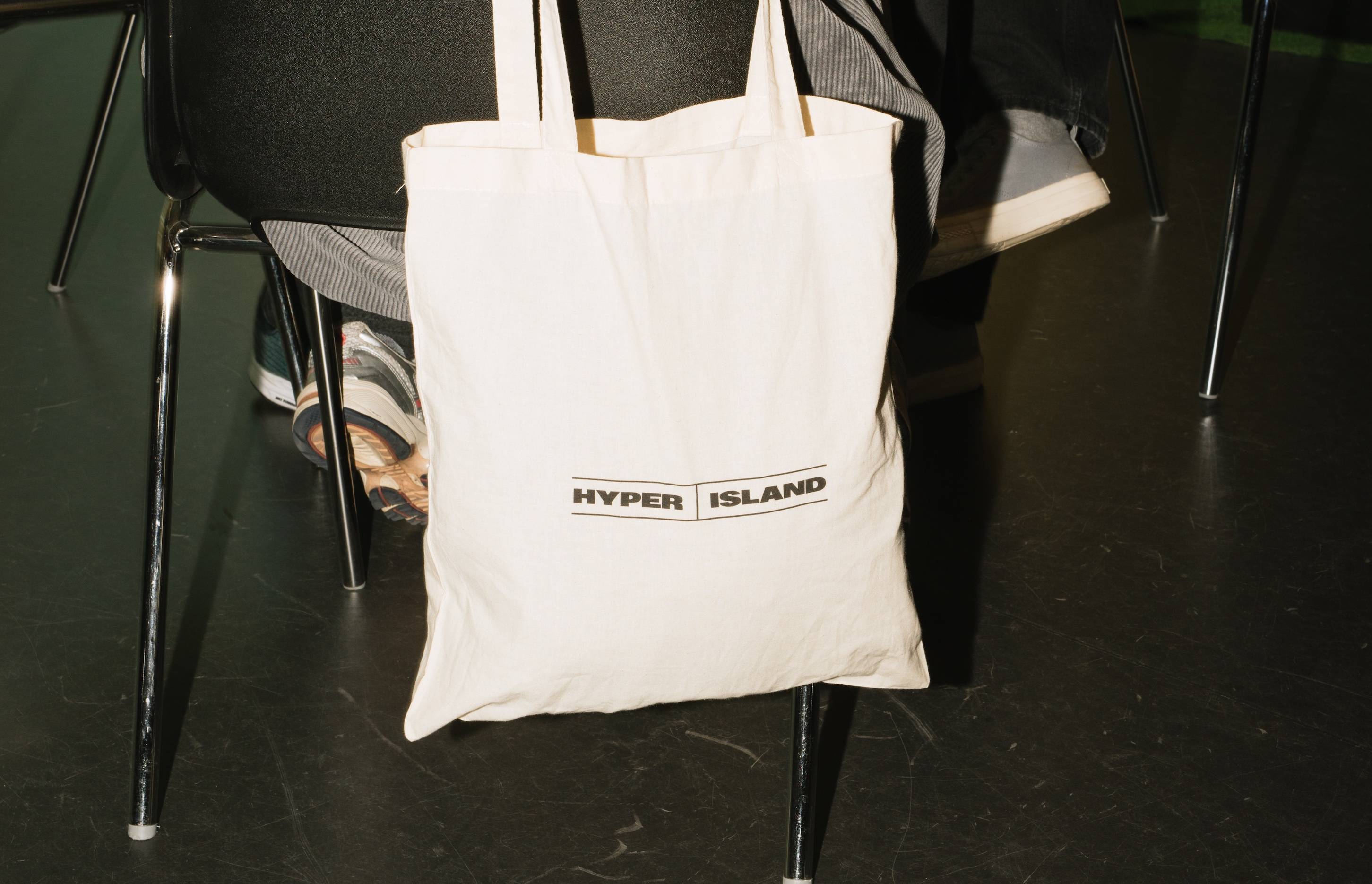Having worked behind the scenes developing Hyper Island’s brand voice for a number of years, it was about time Senior Copywriter Liam James got a taste for the product. Here, he recounts his experience as a student on the Brand Strategy & Storytelling course.
A wide-reaching network
When the opportunity to experience one of the many learning opportunities on the Hyper Island menu arose, I jumped at the chance. As it’s ingrained in Hyper’s value proposition to gain new perspectives and tools to deepen our craft, it seemed only right for me to open up my mind to new learnings, and transfer them into my daily ways of working in the areas of branding and marketing.
Bring on the Brand Strategy & Storytelling course.
Being immersed in Hyper Island’s renowned network, its reach suddenly hit me when I saw the flood of self-made video introductions from my classmates. From vineyard backdrops in Switzerland to an office in Brazil to the unique décor of an Amsterdam home, it was a warming comfort that this collective group had been pulled together by the same intrigue. The sense of community immediately began to grow.
Thought-provoking reading materials
There was no shortage of valuable, well-thought through reading materials. At each stage, I was challenged to overcome one of my biggest developing flaws: being unable to sit still and read a long article. I was glad I did because some of them really impacted my perceptions of branding. The science behind why our brains love a good story for example was a stand-out read.
Professional assets for personal purpose
Each chapter of the course was crafted in a very purposeful way, and the storytelling structure really shone through. Going into this with a growth mindset was key because it allowed me to be totally open to new ideas and approaches. Regardless of how much experience another course member had, there seemed to always be something to learn from each other.
After every chapter, we concluded with three valuable assets:
- Story-self canvas
- Pod call
- Reflection journal
Story-self canvas
To become an effective storyteller for a brand, it was a great idea to first break down myself as a storyteller. That’s why the Story-self canvas became such a handy tool. From my storytelling strengths to the challenges I’ve overcome to what I need to learn to help achieve my storytelling goals, the canvas enabled me to get the most out of my communication capabilities.
Pod call
Each week, I talked online with my fellow pod members to check in, give feedback, support, and simply bounce ideas off of one other. This was a chance to learn about other people’s ways of working, with the added bonus of also getting to know more about the working culture nuances of my coursemates located in different countries. I felt the platform had been provided for real-life story sharing. I’m not entirely sure where the vibe came from, but it felt like a door had been opened and our cohort was there with open arms ready to accept me. The space was safe and with that, it encouraged others to be similarly open and honest.
The moral of my shared story was that other great things can come from pursuing one soul goal. It isn’t the be all and end all. Philosophical, right?
Reflection journal
Reflection has always been a valuable resource in Hyper’s methodology and Toolbox. Whilst studying on the Brand Strategy and Storytelling course, my reflection journal helped me to set a small yet highly productive amount of time to reflect on the previous week’s learnings, and determine how I could maximise my time to learn going forward. I’m not saying each week was easy, especially being a dad to two small kids, but setting aside time for reflection and planning was, more often than not, both helpful and rewarding.
With the awareness and newfound courage of exploring the challenging questions that came with the Story-Self canvas, additional assets including the Storytelling Canvas gave me the chance to apply a similar framework to a brand of choice and the ways in which it shows up for its customer. We all got the opportunity to choose a brand that resonates with us and how they use assets to meet the purposeful needs of their target audience. These assets became important tools to help explore our own abilities as storytellers and the value of brand assets to create loyalty.
An engaging experience
For me, the brands that I relate with the most are the ones that can bring personal experiences into their messaging.
In the group call, the leaders would also introduce their personal experiences. This not only reinforced the safe space nature of the platform, but also brought an authenticity to the table that truly resonated. It also encouraged us to use deeper thinking when analysing the brands that do it best. And by doing it best, I mean that they understand, connect, engage and empathise with their community. Just like in this course, the brands that are the most successful storytellers often create assets that can support their members and followers in meaningful ways.
Essentially, this is where loyalty starts and needs to be maintained. For me, loyalty is (or at least should be) everything to a brand. Loyalty is a key indicator for trust; it’s proof that what you’re doing is being believed in, and a critical signal to a brand that they need to get to understand their followers as much as possible to keep them coming back for more.
This is where the power of storytelling can showcase its true worth.
Effective storytelling
By the final week of the course, the faces on the screen were very familiar, and we’d somehow managed to emulate the classroom vibe through the power of the online, digital universe.
I found the analysis of brands and their storytelling approaches to be fascinating. Brands that make themselves available to their community when they’re needed by building stories around emotion. And often the stories they tell are portraying the people that bring out the best in us. When we discussed our own interactions with brands, and what makes us buy their products or services, it was so interesting to learn how our choices are most likely made more on impulse, often with the logic coming after the purchase.
One of the examples of effective and inspirational storytelling that truly moved me was the story of Charity: Water. I’ll let you discover for yourselves, but for me, this hit the sweet spot of authenticity, relatability, and just damn good storytelling.
The bottom line
When all was said and done, the Brand Strategy & Storytelling course – that I am now a proud graduate of – left me able to think on a deeper level than before. The role of a brand and its relationship to its consumer is rarely straightforward, but this course helped me to peel back the layers and open my eyes to understand how effective content can be. It has given me much food for thought, and like all those that came before me, I am putting my learnings into practice in my daily ways of working as a proud storyteller.


